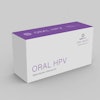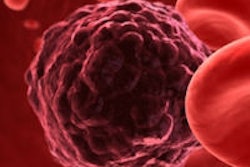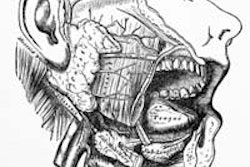Avoiding the contralateral submandibular gland during radiation therapy is feasible and safe with advanced stage, node-positive head and neck cancers and base of tongue lesions, and can decrease the side effect of dry mouth for patients, according to a study presented February 20 at the Multidisciplinary Head and Neck Cancer Symposium, held this week in Scottsdale, AZ.
Researchers conducted a retrospective analysis of 71 patients from two facilities: the University of Colorado Cancer Center and the Memorial Sloan-Kettering Cancer Center in New York. The median patient age was 55; about half of the patients were current or former smokers.
Forty patients had primary tonsil cancers, and 31 patients had tumors involving the base of the tongue. About 80% of patients had N2b or greater disease (extensive lymph node involvement); 90% of patients had overall stage IV disease (advanced cancer).
The analysis only included patients who were receiving treatment to the bilateral neck.
All patients were treated with radiation techniques that spared the contralateral submandibular gland (cSMG), indicating it was on the opposite side of the neck as the cancer. Submandibular glands are major salivary glands located beneath the floor of the mouth and are responsible for the majority of unstimulated salivary flow.
The mean dose to the cSMG was 33.04 Gy, and at a median follow-up of 27.3 months, no patients had recurrences in the contralateral level Ib lymph nodes (the area of the spared submandibular gland).
"Sparing the submandibular gland from radiation can decrease the side effect of dry mouth, which has a substantial impact on patients' quality of life," said lead study author Tyler Robin, PhD, in a press release. "Historically, however, there has been hesitation to spare the submandibular gland from radiation because there are lymph nodes near the gland that also end up not getting treated. While this seems worrisome because head and neck cancer spreads through the lymph nodes, it is well established that the risk of cancer involvement in the lymph nodes near the submandibular gland is exceedingly low, yet the benefit of sparing the gland for a patient's quality of life is high."
Considering treatment side effects alongside treatment benefit is important, Robin noted. "Overall, our goal is to decrease side effects associated with radiation treatment without undertreating a patient's cancer," he said. "With modern advances in radiation therapy, it is possible to eloquently treat cancers while avoiding surrounding normal tissues. Our study is a prime example of how we can safely spare normal tissue in appropriate patients in order to decrease treatment side effects."



















